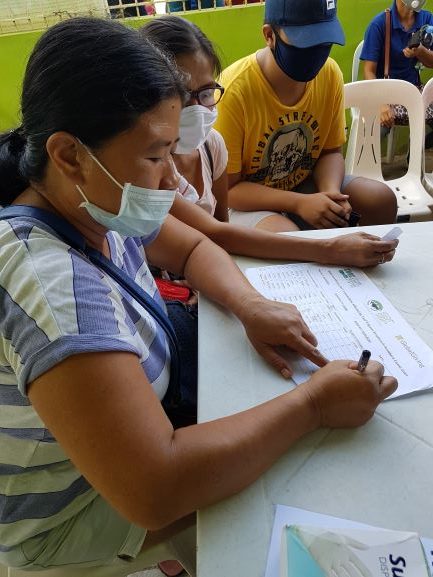Rosalie Alcabar, 38 years old, together with her husband and three children were among the 696 families of Brgy. Buso-Buso who evacuated during the Taal eruption on January 12, 2020.
After staying in an evacuation center for a month, they were finally able to go back to their house after the permanent lockdown on their barangay was lifted. Their barangay is one of the three barangays in Laurel located within the 7-kilometer danger zone. Due to the heavy ashfall, they were greeted by damages to their house.
While in the process of recovery, another disaster hits them with the declaration of the Luzon-wide lockdown that lasted for two-months in response to the COVID-19 pandemic. The biggest damage is on their livelihood as daily wage earners — her being a vendor and her husband being a laborer. The protocols implemented during the Enhanced Community Quarantine restricted them from going out of their houses except when buying essential needs such as food or medicine. However, the lack of source of income limited their capacity to buy food, thus, making them dependent on the relief packs given by the local government.
With the slowly easing of guidelines in the implementation of General Community Quarantine in the province of Batangas, they were able to go back to earning their living. She started to sell kakanin (native delicacies) or banana cue using the ₱2,500.00 capital from her husband’s income as a laborer in repair jobs of houses partially damaged due to the Taal eruption. Despite the exposure risk to COVID-19, Rosalie braved the health hazard by selling house-to-house to earn additional income.
The ₱1,000.00 multi-purpose cash assistance she received from STPRC in partnership with CDRC and Global Giving was spent mainly on food consumption.

